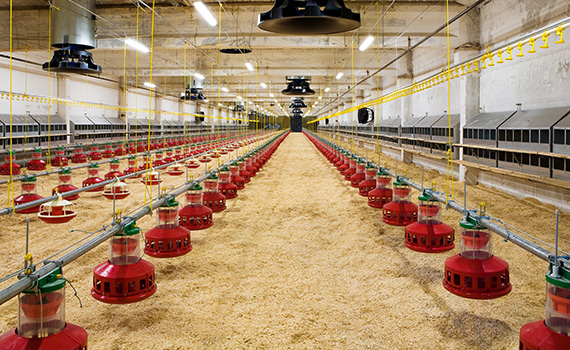Best-management practices key to successful NAE broiler production
With many poultry operations switching to no-antibiotics-ever (NAE) production, management and disease control have become even more critical components.
Without antibiotics, hatching-egg quality, hatchery cleanliness, feed quality and farm management — including litter and air quality, ventilation control, temperature control and ammonia content — are in plain sight and mistakes can take a heavy toll, said Tom Tabler, PhD, poultry research specialist, University of Tennessee Extension.
“NAE means going back to the basics,” he said, pointing to these best-management practices (BMPs):
- Well-developed biosecurity and vaccination programs
- BMPs documented and in use
- Good nutrition programs
- Consistent, high-quality feed
- Finely tuned breeder-health programs
- Clean hatcheries, chick boxes and trucks
- On-farm management that addresses litter quality plus ammonia, temperature, ventilation and humidity levels.
Growers may need to give broilers a little more space to keep litter moisture at a minimum, Tabler said, noting that this will help reduce cocci-oocyst shedding and the pathogenic bacteria load.
Good litter management
Tabler offered several suggestions for litter management with respect to necrotic enteritis (NE) control. “Don’t clean out the litter,” he said. “Necrotic enteritis is more of a challenge on new litter, and built-up litter has beneficial microbial populations that help reduce NE threats.”
Growers should windrow litter to reduce NE threat and make sure the windrow is heating. “Windrowing is not as thorough as traditional composting at killing disease organisms, but it’s a reliable and cost-effective way to reduce the pathogen load,” he said. “Having enough time and not skipping steps are critical to making windrowing work.
“Dry litter and low ammonia levels are key to raising antibiotic-free broilers,” he added. “Using a litter amendment and adequate ventilation are the most practical ways to control ammonia and improve litter quality.”
Tabler suggested this rule of thumb: Squeeze a handful of litter. If it stays in a ball, it’s too wet; if it sticks together slightly, it’s ok; and if it falls apart rapidly, it’s too dry.
‘Grower expertise’ required
“Windrowing requires grower expertise,” Tabler said. “It takes practice with equipment and a desire to do it the right way. It also takes time to build, turn, spread out and dry the windrow.”
Litter depth should ideally be a minimum of 3 to 4 inches deep and no more than 6 inches, Tabler said. “Moisture level is critical: Too much or too little and the windrow won’t reach a temperature that will kill pathogens.”
Growers should consider the carryover health effects from the previous flock, Tabler noted. He recommended these BMPs:
- Use a litter treatment to lower pH and control ammonia.
- Ventilate from day 1 for moisture removal.
- Make sure drinker height and pressure are correct.
- Keep litter dry by burning gas as needed. “It’s cheaper in the long run,” Tabler said.
- Run a fan between flocks to keep ammonia pulled out.
- Start preparing for the next flock the day the current flock leaves by decaking and windrowing, for example. Don’t wait a few days before starting.
Tabler emphasized that controlling moisture is critical. “Moisture increases ammonia issues, promotes bacterial growth and increases pathogen development,” he said. “Caked litter can trap moisture, and litter that is too dry creates dust problems and air-quality concerns.”
In the winter, the primary purpose of ventilation is moisture control, Tabler said.
“Birds consume 2 pounds of water for each pound of feed they consume, and 80% of this water is added back to the house environment in the form of manure and respiration,” he added. “Ventilation should be such that you control relative humidity between 50% and 70%. Waiting until the litter starts to slick over to properly ventilate means you have a high-moisture problem that you can’t ventilate your way out of.
“Good litter management and air quality likely lead to increased weight gain, better feed conversion, improved flock performance and a bigger flock-settlement check,” Tabler added.
Watch the birds
“Find a 5-gallon bucket you like and sit on it,” Tabler concluded. “Nothing works better than you being in that house, so sit down and watch those chickens. You have to be in the house if you want to grow chickens successfully.”
Posted on September 15, 2022

















